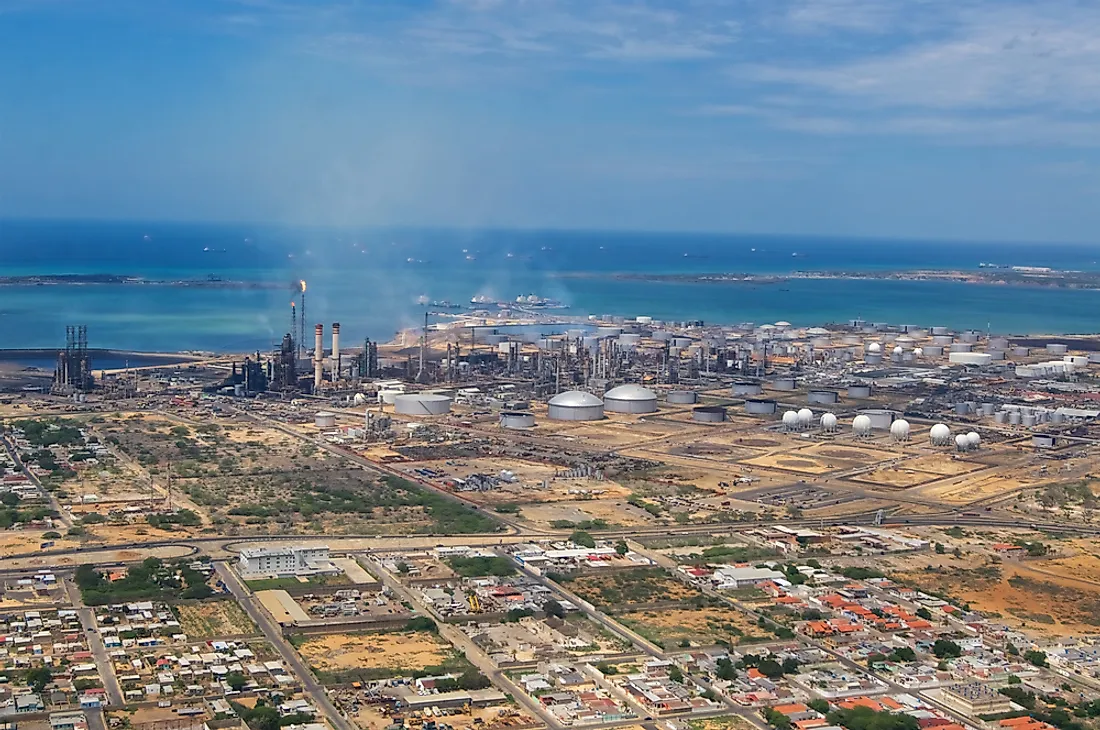What Are The Major Natural Resources Of Venezuela?

Officially known as the Bolivarian Republic of Venezuela, Venezuela is a country in South America. The country consists of several small islands as well as a continental landmass. In total, Venezuela has an area of about 353,841 square miles with water consisting of 3.2% of the total area. As of 2018, Venezuela had a nominal gross domestic product of around $96.3 billion. This economy is mainly driven by the petroleum and manufacturing sectors. As is the case with other countries around the world, Venezuela’s economy is also driven by the natural resources located in the nation. Aside from petroleum, other natural resources include natural gas, land for agriculture, water for the production of electricity, and other resources. According to estimates, the natural resources in the country total a whopping $14.3 trillion.
Mining
As stated earlier, Venezuela is a major player in the petroleum and natural gas sector. To put it into context, Venezuela’s oil reserves easily trump the combined deposits of the United States, Mexico, and Canada. Since 2010, Venezuela has the world’s largest oil deposits at around 298 million barrels. Venezuela jumped to the first position after surveys deemed the oil from the Orinoco Belt as economically recoverable. For almost a century now, Venezuela has been producing oil. In addition, it was a founder member of the Organization of Petroleum Exporting Countries (OPEC). The main oil company, Petróleos de Venezuela S.A. (PDVSA), produces about 3.3 million barrels of oil every day although some estimates place the production closer to between 2.8 and 2.9 million barrels. The major oil fields of the nation are located in four major basins namely Maracaibo, Apure, Oriental, and Falcon. Half of the government revenue is accounted for by oil. From a financial perspective, petroleum accounts for 95% of the total exports from Venezuela.
Agriculture
Compared to other Latin nations, Agriculture has a smaller contribution to the economy. The reduced share happed after the nation discovered the vast and considerably more valuable oil reserves in the early stages of the 20th century. After that, industrialization also started taking root, which further pushed agriculture down the pecking order in the government plans. Presently, agriculture accounts for about 3% of Venezuela’s GDP. About 10% of Venezuela’s labor force works in the agricultural sector. Negative things like low investment and inefficiency characterize the sector. Most of the agricultural land (around 70%) is owned by a small chunk of the agricultural proprietors.
Energy
The electricity sector in Venezuela is among the unique ones in the world to depend primarily on hydropower. In 2015, about 64% of the nation’s energy needs were satisfied by hydroelectricity. The total production in that year was around 117 TWh, which means that about 74.88 TWh came from hydropower. In that year, Venezuela produced about 1.9% of the total hydropower produced in the world.
Tourism
The country is also endowed with a number of tourist attractions that attract a considerable number of visitors every year. Aside from the tourist attractions, visitors are also attracted by things like the geographical position of Venezuela, great tropical weather, wildlife, a varied landscape, and other things. In addition, traveling to Venezuela is not as complicated in terms of travel requisites compared to other countries. The major exotic destinations within the state include the Merida State, Margarita Island, Los Roques, Canaima, Morrocoy, Caracas, and others. Some of the sites in Venezuela are now classified as World Heritage Sites. These sites include Coro (Venezuela’s oldest city), Canaima National Park, and the University City of Caracas. Unfortunately, the country has been experiencing a severe crisis in the economy since 2013. The crisis has impacted all the sectors, including tourism, negatively.











